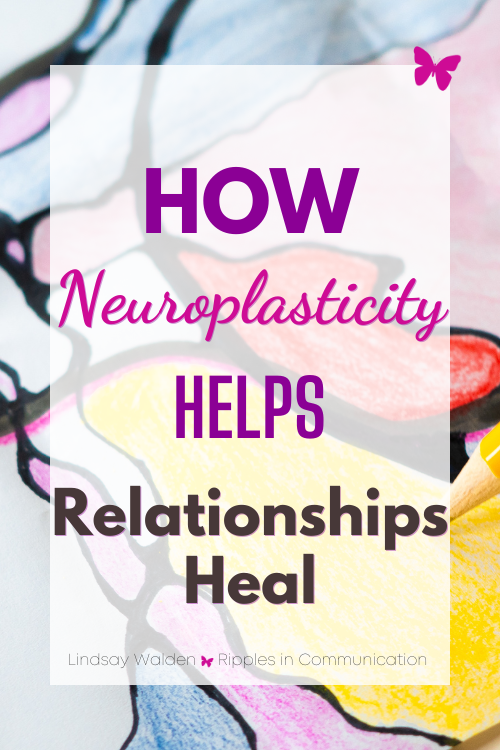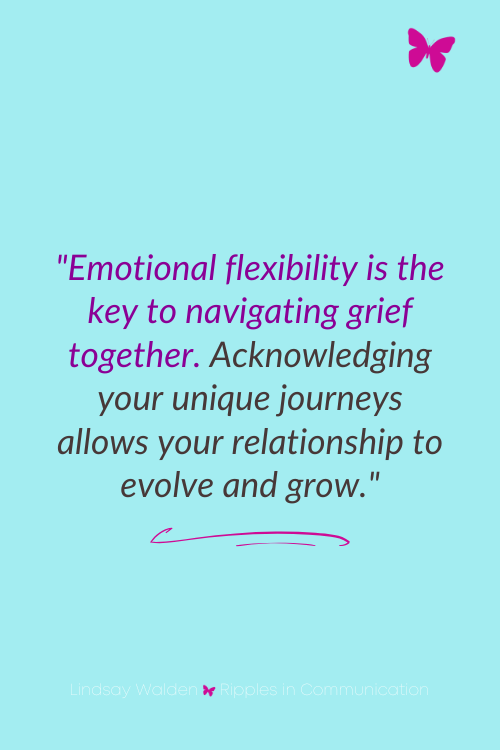From Grief to Growth: How Neuroplasticity Helped Heal a Relationship
Andrew and Aimee’s Journey Through Loss and Change
Relationships, much like the human brain, are dynamic and ever-changing. They possess an incredible capacity to adapt, grow, and heal—a concept in neuroscience known as neuroplasticity. This flexibility is crucial, especially when relationships face significant stressors, such as the loss of loved ones or major life transitions.
Andrew and Aimee, a couple who recently experienced the loss of three important people in their lives while simultaneously preparing for a move to a new state, provide a powerful example of how neuroplasticity in relationships can occur.
Have you gotten my FREE Relationship Communication Guide yet? Start building an authentic, conscious, and thriving relationship with your partner TODAY. Say goodbye to misunderstandings, conflicts, and missed opportunities and dive in and learn how to communicate better for a deeper connection. These are the same tips and practical advice I give to my clients every day. With this guide, you'll be equipped to navigate any communication challenge and build a strong and fulfilling bond with your partner. Click the button below to enter your email address and I will send the guide to your inbox right away!
Understanding Neuroplasticity in Relationships
Neuroplasticity refers to the brain’s ability to reorganize itself by forming new neural connections, known as neural pathways, throughout life. This adaptability is essential for learning, memory, emotional regulation, and recovery from trauma. In relationships, neuroplasticity mirrors this process. Just as the brain can change in response to new experiences, relationships can evolve and rewire in response to life’s challenges.
When a couple experiences significant stress, such as the loss of loved ones, their relationship can be tested. The emotional toll of grief can create distance, misunderstandings, hurt feelings, and potential conflict. However, just as neural pathways in the brain can be rewired through deliberate practice and healing, so too can the bonds between partners.
Andrew and Aimee’s Story
Andrew and Aimee had been together for several years, and their relationship had always been full of love, mutual respect, and shared dreams. However, in a short span of time, they lost three close family members. The grief was overwhelming, not only because of the individual losses but also because these people had been integral to their lives as a couple. As they grappled with their sorrow, they were also faced with the daunting task of relocating to a new state—an upheaval that would uproot them from their familiar environment and support network.
Discover how neuroplasticity can transform and heal relationships, especially when facing challenges like grief and loss. Learn practical ways to rebuild and strengthen your relationship using the power of neuroscience.
The Impact of Loss and Change
The losses they experienced brought about an emotional strain that neither Andrew nor Aimee had anticipated. Grief doesn’t follow a predictable path—it can manifest as sadness, fear, anger, denial, or even numbness. And it doesn’t always look the same for both partners. For Andrew, the losses triggered deep introspection and withdrawal, while Aimee found herself oscillating between bouts of tears and attempts to maintain normalcy.
In the midst of this, the move became a source of added tension. The uncertainty of starting over in a new place, away from the familiar, compounded their feelings of instability. However, it was also during this time that Andrew and Aimee began to understand the potential for their relationship to evolve through adversity.
Unlock the power of emotional flexibility in your relationship. Learn how acknowledging each other's unique journeys can lead to growth and deeper connection.
The Role of Emotional Flexibility
Neuroplasticity in relationships requires emotional flexibility—the ability to adapt and adjust to new emotional realities. For Andrew and Aimee, this meant acknowledging their grief not as a shared experience with identical expressions, but as individual journeys that they could support each other through. They learned to communicate openly about their feelings without judgment, creating a space where they could process their emotions together and separately.
A key turning point was when they decided to engage in a ritual to honor their lost loved ones before the move. This act of remembrance allowed them to confront their grief together, creating a new shared memory that honored their past while preparing them for their future.
Through deliberate efforts to support each other, Andrew and Aimee began to notice changes in their relationship. Much like neural pathways that are strengthened through repeated use, their bond deepened as they consciously chose to face their challenges together. They became more attuned to each other’s needs and developed a stronger sense of resilience as a couple.
Their move to the new state eventually became an opportunity for growth. In their new environment, Andrew and Aimee found themselves leaning on each other more, building a new support system, and creating new routines. Their relationship was rewired through the challenges they faced, and they emerged stronger, more adaptable, and more resilient. Ultimately, they came out better than they were before not because of what they faced but because of how they handled the changes as they moved through the emotions and feelings both as a couple and as individuals.
Conclusion
Andrew and Aimee's story illustrates the incredible potential for growth within relationships, even in the face of significant stressors. Just as the brain can adapt and rewire in response to trauma or change, so too can relationships. The concept of neuroplasticity in relationships emphasizes the importance of emotional flexibility, open communication, and deliberate efforts to support one another.
In times of loss and transition, couples may find themselves at a crossroads, but it is in these moments that the opportunity for deeper connection and understanding emerges. Andrew and Aimee’s journey reminds us that with intention and care, relationships can not only survive adversity but also thrive, emerging stronger and more resilient than before.
Discover a powerful daily mindset shift to help you and your partner move from feeling overwhelmed and disconnected to embracing emotional flexibility and open communication. This simple practice can foster deeper connection and resilience in your relationship.








